Comparisons
Panda x Audeze Mobius
There’s one very obvious natural competitor for the Drop THX Panda, and one from which it won’t be able to escape comparisons with – the Audeze Mobius. They’re both LDAC-capable Bluetooth/wireless headphones; both $399; both reasonably portable; and both use planar magnetic transducers. Philosophically they’re quite different, however. The Mobius uses DSP trickery to achieve its tuning and can adapt on the fly to create different flavours of planar playback depending on user preference and application. It’s also explicitly marketed as a gaming headset, with one of its key selling features being its 3D ‘head-tracking’ technology and virtual surround abilities.
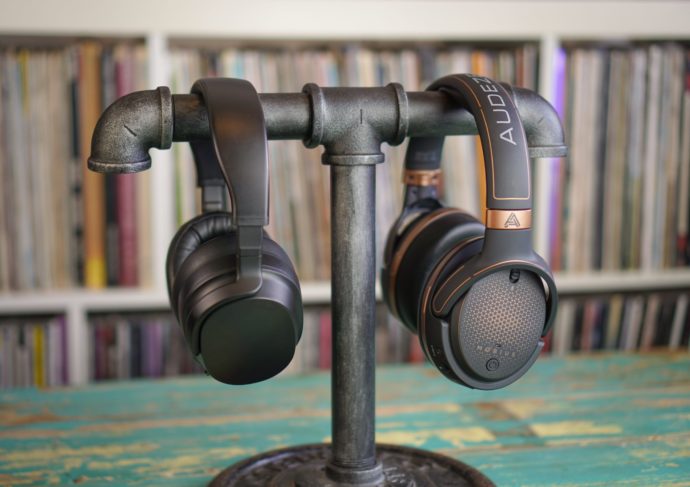
Panda with its closest planar/wireless competitor: the Audeze Mobius.
I signed up for the Mobius the day its initial Indigogo campaign launched – not because I’m a huge gamer, but because it looked like an incredible advancement in headphone technology wrapped-up in a small-ish planar package – and it still very much is. Somewhat controversially, they’re actually my favourite-sounding Audeze headphones. Yep. I’ll take them over any of the LCD line-up any day, as I find them simply too dark, and too heavy…aaaand they’re much more expensive.
However, the Mobius does have all the aesthetic charm of a $40 RGB gaming keyboard, and with its outside bristling with switches and dials it’s not exactly made for the outside world. The Panda is a far more handsome package, and also a more comfortable one. Isolation is markedly more impressive on the Panda, which also manages its weight far more comfortably via a more even clamp-force. By comparison, the Mobius does tend to hand from the headband on the top of your head, and the cups do flap around somewhat.
in terms of sonic differences, when using it in ‘flat’ or ‘default’ tuning the Mobius is leaner, snappier, with better treble detail. It also has a greater sense of air, and more space in the sound stage it creates. It’s a drier, more classically planar sound but by contrast, the Panda is richer and more euphonic. Of course, the way each headphone goes about creating the sound is entirely different – the Panda has been tuned acoustically and can work happily as a passive pair of headphones, whereas the Mobius uses DSP which cannot be switched-off nor defeated. The Mobius does have a slight audible background hiss that is evident when music is not playing but is otherwise not a problem if music is playing.
At the end of the day they’re both very capable, impressive and good value headphones, and recommending one over the other depends entirely on your use-case and preferences. If you’re a digital ‘tinkerer’ and like the ability to use DSP to create a range of surround and EQ effects, and also like to dabble in gaming and movies – pick the Mobius. If you’re looking for more of a purist audio headphone that you’ll be likely to want to use in public, pick the Panda. The irony is, of course, that the Mobius can nearly mimic the sonic profile of the Panda with its ‘warm’ setting, but the fact that the Panda can also easily become a gaming headset thanks to a boom-mic accessory is a flip on that in turn. If I were to choose again in 2020 where I’d put my money, it’d probably be on the Panda.
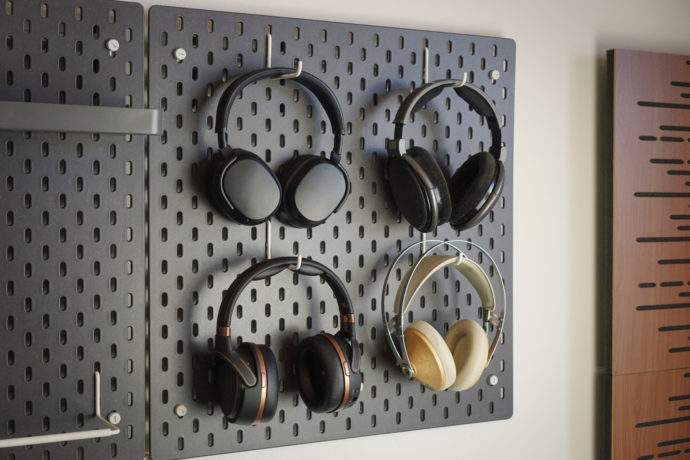
Clockwise from top left: Drop + THX Panda; Sennheiser HD650; Meze 99 Classic; Audeze Mobius.
Panda x Meze 99 Classic
I thought that readers might find it interesting to compare the Panda against a similarly-priced and well-known closed-back portable, the $309 USD 99 Classics from Meze Audio. If you’re looking for a well-built and portable pair of close-backed headphones under $500, then these are both plausible choices. Tonally they’re actually more similar than they are different – the Meze 99 has a fairly rich tone and dynamic character, but a less well-controlled low end that has more bloom and heft than the Panda. The Panda also edges the Meze out for air and detail in the treble, as well as for comfort and isolation. Of course, the Panda packs-in wireless technology and THX amplification for less than $100 more, but the Meze is more of a purist, design-led option that’s strictly analogue…if that’s your thing.
Panda x Sennheiser HD650
This last comparison may seem a little strange, but the HD6XX (identical sonically to the HD650) is the headphone that put Drop on the map in audiophile circles. For around the $200-mark it is still the benchmark when it comes to bulletproof, proven performance, and it’s hard to go past if you’re looking for a pair of headphones with sound quality as the out-and-out focus. Differences in architecture and technology aside, it’s interesting to compare them back-to-back. The HD650 makes the Panda sound lean, snappy and slightly brittle when switching between the two. Of course, the HD650 is famously laid-back and smooth, but it’s a good reminder of just how tonally correct the HD650 remains to this day against far newer competitors. The Panda wins out in extension at both the top and bottom ends, but it simply can’t match the vintage Sennheiser for mid-range tonality and richness. One thing’s for sure however – you’re not taking the HD650 to half as many places as you’ll be able to go with the Pandas.
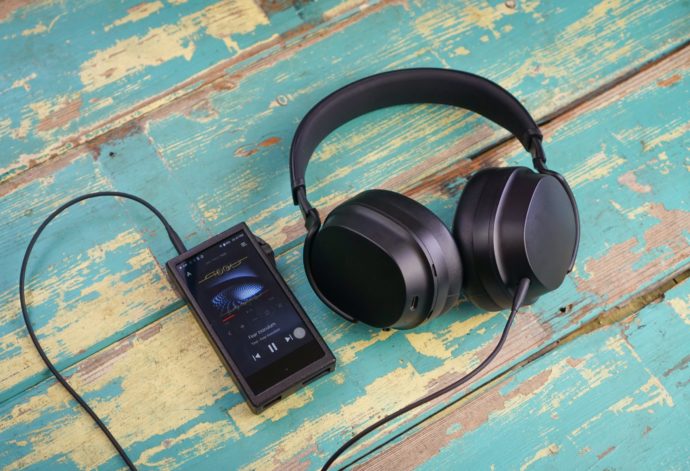
Panda can be powered passively via its 3.5mm connection.
Wired vs Wireless
This section will be surprisingly short – I spent a lot of time pairing the Panda with a range of external sources and amplification, from my desktop Questlye CMA600i amplifier to the latest SA700 DAP from Astell&Kern. But, I quickly found that I didn’t really need to – the Panda just sounds so bloody impressive in wireless mode via its on-board THX AAA amplification. Bluetooth on the Panda is audibly transparent, and without a way of A/B testing versus wired, I couldn’t give Headfonia readers an honestly accurate breakdown of the nuances and distinctions between each mode. Just consider me wholly impressed – being able to use wired mode is a terrific convenience should the battery run-flat, or if you simply want to plug the panda into the source you just so happen to be using.
Final thoughts on the Drop THX Panda
With the proven technology and experience that’s gone into the Drop THX Panda, I’m really not altogether surprised by just how technically capable and impressive it is in several areas. But I wasn’t expecting it to be so impressive as a complete package – there are just so many applications where it makes perfect sense to have the Panda as your primary headphone.
Sonically, the Drop THX Panda has a bloody pleasant tone that manages to tastefully blend ‘excitement’ with warmth no matter what genre you throw at it. It’s a signature I could put up with all day without the slightest hint of fatigue. And when you combine this with the fact that is has a 30-hour battery life and pretty great comfort, I could genuinely see myself using the Panda all day…from leaving the house in the morning…at the airport and onto a flight…into a cab and then off to the office…and then finally back to a hotel to relax with some music or movies – all on the one set of headphones, on the one charge. Not bad, not bad.
For a $399 wireless closed-back headphone with audio as its primary focus, it’s a no-brainer. I’d actually still recommend it as a $399 closed-back headphone even if you aren’t ever planning on using it in wireless mode – it’s that good. And the incredible thing is that we haven’t even seen everything that the Panda has to offer yet, so it’s only going to get more interesting from here. Count me in.





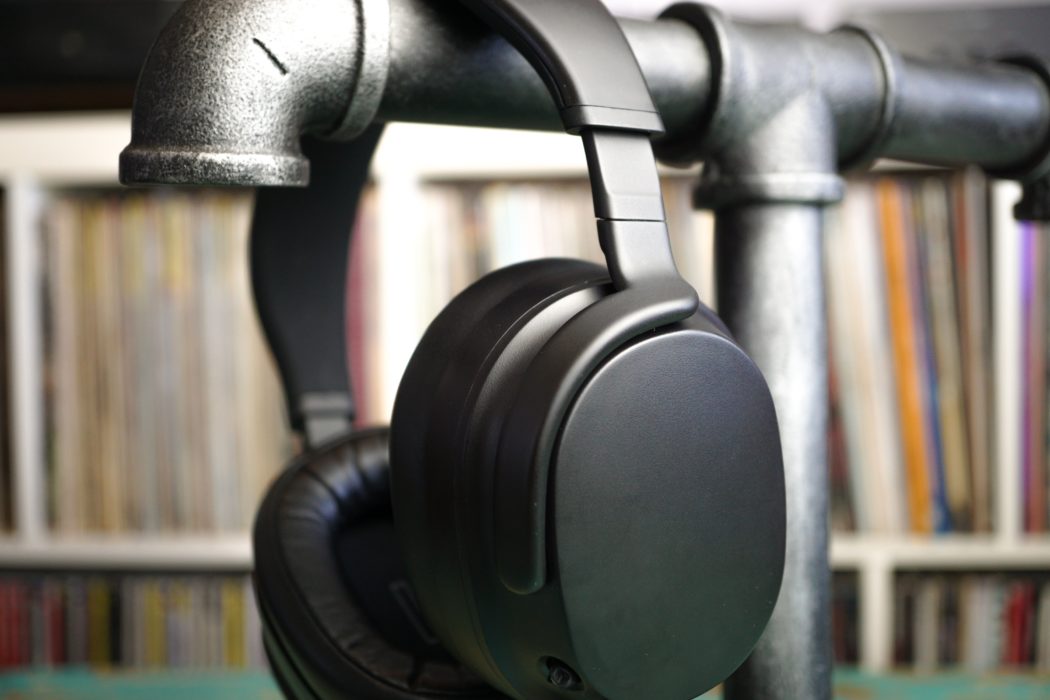
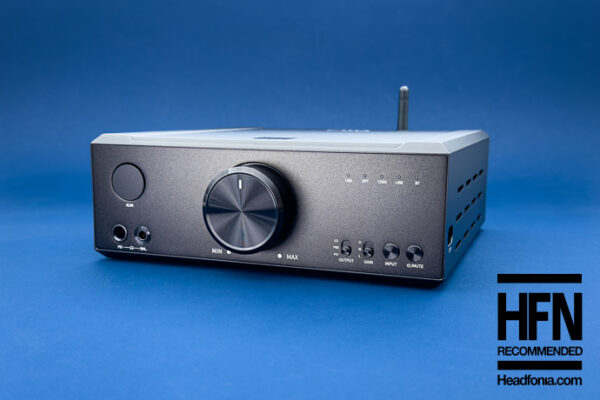
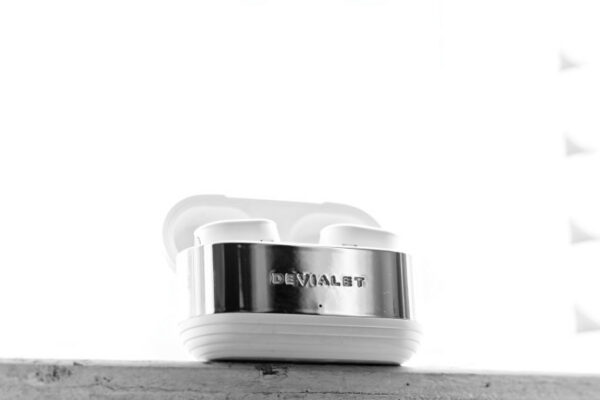
Peter
Great review! These are on the list now! Seen a lot of reviewers raving about them already, but this review is a bit more thorough then the rest of them. Great job!
Matty Graham
Thanks Peter, glad to hear you found it useful – I hope you enjoy the production model.
Robert
How would the Panda compare with the Sennheiser HD1 Wireless?
Matty Graham
Cheers Peter! I hope it gave you a good idea as to what we can expect when the launch version arrives.
Robert
How would the Panda compare with the Sennheiser HD1 Wireless?
Matty Graham
It would be an interesting comparison – that’s for sure. The Panda is a little more ‘purist’ in the way it’s been designed, but not having compared directly I couldn’t say exactly – it probably depends on whether you’re a traveller (and need ANC), or looking for straight-up SQ.
Usman
A comparison to the Sony WH-1000XM3 would also be helpful !
Matty Graham
Hey Usman, I don’t have either on hand to compare any more, but I distinctly remember the Sony having a dark, mid bass-centric sound. And of course, they’re designed to actively cancel noise. The Panda is hands-down better in terms of sound quality, and I’d say it’s passive isolation is a “fine” trade-off.
Toni
About Panda vs Meze 99 Classics – which do you prefer was more comfortable? Do you think that Panda had bigger and softer pads or how was it? I have Meze’s and I’m thinking to purchase Panda for office use. I like the Meze’s but sometimes I just wish that the pads were softer and maybe a bit bigger.
Matty Graham
Hi Toni, the Panda is a snugger, more comfortable fit overall and also isolates better.
arnold
Nice review!
How does the sound quality compare to the Audeze EL-8?
Ajith Nambiar
How does one get hands on a panda in Australia. The drop check out says doesn’t ship to Aus when I put my address as Melbourne.
Tony Peng
I think nowadays would be a lot harder, I got my pair in Australia via the Panda was still in crowd funding stage on Indiegogo. Now you can only purchase it through the official website on Drop
Zaza Asatiani
Hi Matty, you did a fantastic job. Thanks!
Can we say that Drop Panda is the best sounding wireless headphones currently available on the market?
Before I heard about Panda for first time, I had a dillemma to decide between Beyerdynamic Amiron Wireless, Audio-Technica DSR9BT and Shure Ionic 50.
Have you listend to them as well? Any comparison with Panda?
Best Regards,
Zaza
akira
hey, ive been searching for a long time for a comparison between the mobius and panda. could you please elaborate on that comparison. I really wanna know which one sounds better
. Im planning to use it with a fiio m5.
I just want to know which one sounds better
Matty Graham
Hi mate, I’ve just got my hands on the production Panda so I’ll let you know in a week or so after I’ve had a good listen to them.
akira
thanks sooo much, ive heard the mobius arent good for music but I dont believe that. id like to hear from you what you think about them both. seeing as your an experienced audiophile